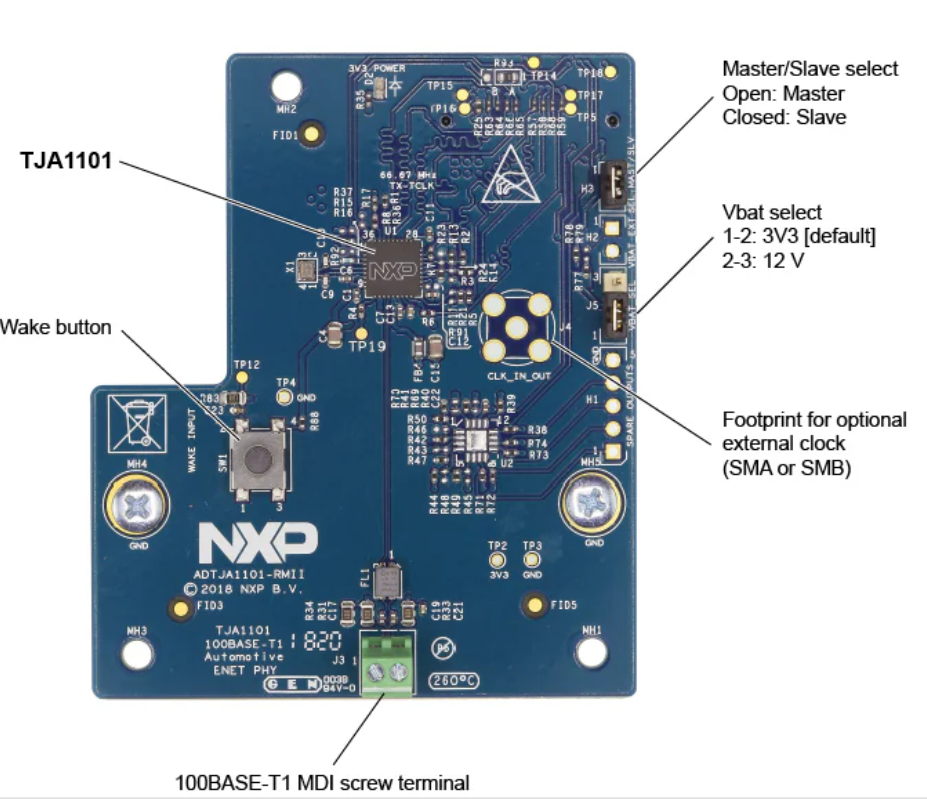Working with Ethernet
Both the POSIX and S32K148 builds support Ethernet functionality, but they do so using different configurations.
- Ethernet Setup:
S32K148 uses a development board in combination with the TJA1101 Automotive Ethernet PHY transceiver daughter board. This provides a physical Ethernet interface suitable for automotive applications.
POSIX employs a TAP (Network TUN/TAP) Ethernet module, which provides a virtual Ethernet interface for simulation and testing.
Refer EthernetSystem for more details on the Ethernet application system.
Set-up Environment
Before proceeding with the Ethernet setup, ensure you have built the openBsw project for the respective platform.
- Reference for instructions:
POSIX
A tap0 interface is needed for virtual Ethernet. The bring-up-ethernet.sh script will set it up.
While running this script in the terminal, you need sudo permission.
- Setup in Testing PC:
Navigate to the openBsw root directory.
Run the script to set up the tap interface:
./tools/enet/bring-up-ethernet.shRun the application on POSIX with the below command in the terminal:
build/posix/executables/referenceApp/application/Release/app.referenceApp.elf
S32K148
- Hardware Connection:
Connect the S32K148 development board to the TJA1101 daughter board.
Ensure the TJA1101 board is configured as master mode (Remove the jumper).
You need a media converter (automotive Ethernet to standard Ethernet) to test on a PC, since TJA1101 has automotive Ethernet as output.
Connect the TJA1101 daughter board (100Base-T1) to the media converter using a twisted pair cable.
Connect the media converter to the PC using a standard Ethernet cable.
If master/slave mode is available in the media converter, ensure it is configured as slave mode.
If an external power supply is required for the media converter, 12v is available from the S32K148 development board itself (J3-3 pin).

- Setup in Testing PC:
Set the
IPof the Ethernet port in the testing PC to192.168.0.1(Static IP)In Windows, changing IP assignment to manual can be done from:
Control Panel -> Network and Internet -> Ethernet.IPv4 subnet mask can be configured as
255.255.255.0
Flash the application to the S32K148 board as instructed in Using NXP S32DS or Using GDB Debugger.
Note
If the tap0 interface added for POSIX is still active, it needs to be removed
before testing on the S32K148. You can use the below command in the terminal:
sudo ip tuntap del dev tap0 mode tap
Ping Test
To verify the Ethernet connection, you can perform a ping test.
Open a terminal and run:
For POSIX:
ping 192.168.0.200For S32K148:
ping 192.168.0.201
This should show a response indicating that the Ethernet connection is working correctly.
Note
The static IP configured in the netif module for the POSIX platform is 192.168.0.201 and for S32K148
192.168.0.200.
Test with ncat/telnet
To test the Ethernet functionality, you can use ncat or telnet for simple TCP/UDP communication. Since our demo application has echo server functionality implemented in EthernetSystems, you can send messages and receive them back as an echo.
Ensure you have ncat and telnet installed on your system.
- UDP:
POSIX:
ncat -u 192.168.0.201 49444S32K148:
ncat -u 192.168.0.200 49444
Once the connection is established, type your message and press
enter, the echo will be printed back. To exit from ncat:ctrl + C.- TCP:
POSIX:
telnet 192.168.0.201 49555S32K148:
telnet 192.168.0.200 49555
Once the connection is established, type your message and press
enter, the echo will be printed back. To exit from telnet:ctrl + ]and typequit.
Test with Iperf
Iperf is a tool for measuring the maximum TCP and UDP bandwidth performance. We have implemented iperf basic server functionality in the EthernetSystems application, allowing you to test the network performance using the iperf client.
Note
Ensure that the iperf2 tool is installed on your system before running the commands below.
In Ubuntu, you can install it using: sudo apt install iperf. We tested with version 2.1.5.
- Test Ethernet on POSIX:
TCP:
iperf -c 192.168.0.201 -w 2739 -l 1459 -t 5UDP:
iperf -c 192.168.0.201 -u -l 1000 -b 10M -t 5
- Test Ethernet on S32K148:
TCP:
iperf -c 192.168.0.200 -w 2739 -l 1459 -t 5UDP:
iperf -c 192.168.0.200 -u -l 1000 -b 10M -t 5
Test with Pytest
Functional testing of the Ethernet application is done using Pytest.
The Pytest script is placed under test/pyTest/enet/test_ethernet.py.
Refer to test/pyTest/README.md for instructions on how to run the Pytest script.